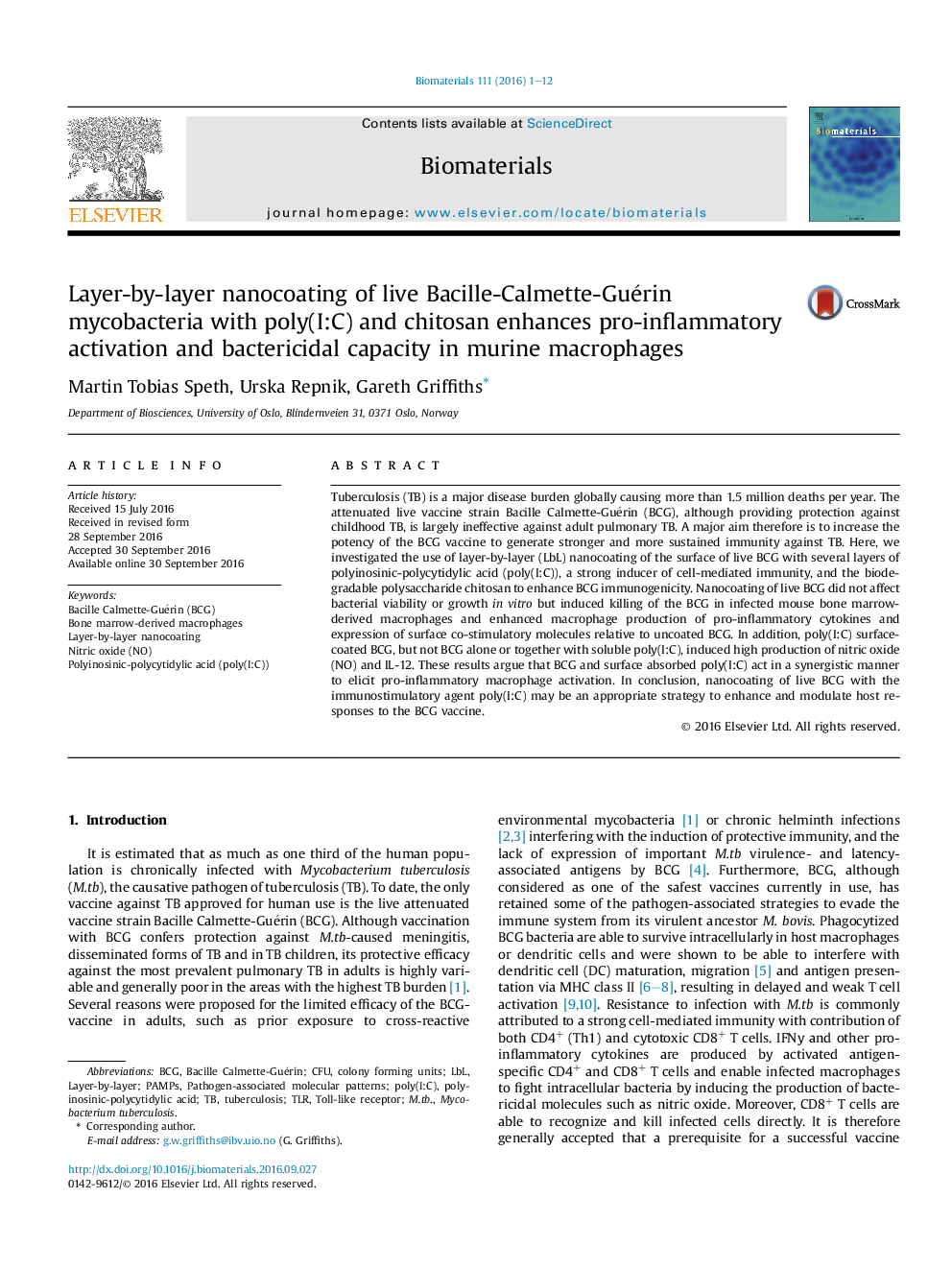| Article ID | Journal | Published Year | Pages | File Type |
|---|---|---|---|---|
| 6451005 | Biomaterials | 2016 | 12 Pages |
Tuberculosis (TB) is a major disease burden globally causing more than 1.5 million deaths per year. The attenuated live vaccine strain Bacille Calmette-Guérin (BCG), although providing protection against childhood TB, is largely ineffective against adult pulmonary TB. A major aim therefore is to increase the potency of the BCG vaccine to generate stronger and more sustained immunity against TB. Here, we investigated the use of layer-by-layer (LbL) nanocoating of the surface of live BCG with several layers of polyinosinic-polycytidylic acid (poly(I:C)), a strong inducer of cell-mediated immunity, and the biodegradable polysaccharide chitosan to enhance BCG immunogenicity. Nanocoating of live BCG did not affect bacterial viability or growth in vitro but induced killing of the BCG in infected mouse bone marrow-derived macrophages and enhanced macrophage production of pro-inflammatory cytokines and expression of surface co-stimulatory molecules relative to uncoated BCG. In addition, poly(I:C) surface-coated BCG, but not BCG alone or together with soluble poly(I:C), induced high production of nitric oxide (NO) and IL-12. These results argue that BCG and surface absorbed poly(I:C) act in a synergistic manner to elicit pro-inflammatory macrophage activation. In conclusion, nanocoating of live BCG with the immunostimulatory agent poly(I:C) may be an appropriate strategy to enhance and modulate host responses to the BCG vaccine.
Graphical abstractDownload high-res image (431KB)Download full-size image
